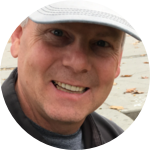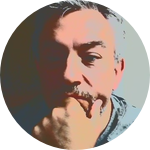About This Project
Through this project, we aim to answer the question: do earthquakes change shortwave radio propagation? If the shortwave radio propagation is affected by earthquakes, then the effect will be visible when the USGS earthquakes are time-correlated to the occurring propagation that the RF-Seismograph measures. By measuring shortwave reception, there is hope that one day it may lead to an earthquake warning system and a better understanding of the electrical nature of earthquakes.
Ask the Scientists
Join The DiscussionWhat is the context of this research?
The RF-Seismograph team provides a real-time propagation report on our website as well as a daily summary of the earthquakes that have been detected. We also offer a synopsis report explaining the recorded events. Our daily Quake vs. Propagation reports and report history are available through our user group:
https://www.qsl.net/rf-seismograph/
What is the significance of this project?
This project is significant because it seeks to explain and measure the
electrical effect of earthquakes. It also explores the interaction
between the earthquake's surface wave and the ionosphere. The
RF-Seismograph allows the measurement of earthquakes' precursors that
are recorded daily.
This article offers insight into the data collected by the RF-Seismograph.
Studying earthquakes provides information beyond current mechanical understandings. This article provides a basic overview.
Through this project, it will become clear that the RF-Seismograph is superior to the ionosound system in that it is faster and able to measure the ionosphere on the horizon of the antenna where the effect is most visible.
This article explains the lowest possible frequencies generated by earthquakes.
What are the goals of the project?
Almost every university has a shortwave radio setup that is not used most of the time. Our research and development can take advantage of existing hardware and, with very little work and cost, turn it into a space weather station that can also detect earthquakes.
Any funds that we collect will be going to one or more willing Universities that can replicate the findings of the RF-Seismograph and show that the concept of detecting earthquakes via the changes of the ionosphere is feasible.
Budget
Since we had the RF-Seismograph running since 2016, we started to investigate all of our collected data. As our understanding developed, we were able to confirm that out of more than 200 M6.0+ quakes that occurred during the time data were collected, at least 80% were detected. Over time, we worked to modify all aspects of the set-up to be more efficient. With our improved setup and software, we can now match over 95% of all significant earthquakes that are detected by the USGS Mechanical Seismograph System! One shortwave receiver located in Vancouver, Canada is able to detect earthquakes around the world!
But, to this day, it is the only station that is capable of receiving the changes earthquakes make; we would like to change that.
The "X-Prize" will be going to one or more Universities that can replicate the findings of the RF-Seismograph and show that the concept of detecting earthquakes via the changes of the ionosphere is feasible.
 Project Timeline
Project Timeline
Once the RF-Seismograph is set up, the results of detecting quakes will be immediate. It will run with minimal supervision.
The timeline for this project is ongoing as it centers on the collection of data that will be used to verify and further study the effect of earthquakes on propagation. Setting an end date allows interested Universities the time to collect data and submit for evaluation.
Moving forward from this initial phase, more time and funding will be needed to continue this work.
Mar 31, 2021
Approach Universities to recruit interested departments and answer any questions they may have.
Apr 30, 2021
Modifying and existing shortwave radio to provide an IF output that will connect to the RF-Seismograph
Apr 30, 2021
Monitor data collection online and correlate them with earthquake events recorded by the USGS (ongoing)
Apr 30, 2021
Provide initial and ongoing technical support for the set-up and use of RF-Seismograph software (ongoing)
Jan 31, 2022
The grant will be awarded to the University that can replicate the findings of the RF-Seismograph and show that the concept of detecting earthquakes via the ionosphere is feasible.
Meet the Team
Alex Schwarz
Alex Schwarz (VE7DXW) is an advanced HAM and a graduate of the HTL, Innsbruck, Austria. He moved to Vancouver (Canada) in 1990 and has since been involved in professional communication systems (LDR trunking) and digital point to point wireless network systems. In 2005 he started work in the Biomedical Engineering Department at C&W Hospital in Vancouver.
In 2008, Alex explored the concept of a Bi-LIF (Bidirectional Low Intermediate Frequency) transverter. He developed an MDSR (Modulation –Demodulation Software Radio) to provide a cost-effective and easy to use interface between a computer’s soundcard and a transceiver.
In 2016, Alex developed the RF-Seismograph for the solar eclipse experiment in August 2017. The RF-Seismograph was tested by a team of volunteers which Alex coordinated and managed. In the fall of 2019 Alex and his team found that the RF-Seismograph was actually able to record earthquakes by detecting propagation changes during 3 local quakes.
Alex is interested in finding low cost, easily accessible technological solutions for applications that would otherwise be overlooked or limited to specialized and expensive equipment and users.
Philip Moscinski
Phil Moscinski (N2EU) is an Extra Class HAM and a graduate of Rutgers University in New Jersey. He moved to the Seattle area in 1991. With a degree in the biological sciences and a passion for computing, he started his career working at an Exxon Toxicology Laboratory (1981) managing the computing environment. He then proceeded to work for various firms, both small and midsize, architecting each company's data processing departments. In 2010 he began a technology consultancy, and retired in 2017.
Acquiring an Amateur Radio license in 1978 cleared a path to a lifelong love of science and technology.
Additional Information
In order to allow this work to be recognized by a broader and more diverse audience, it is important to have the participation of reputable and well established partners such as universities. What's more, universities allow this work to be studied and implemented on a larger scale.
Project Backers
- 0Backers
- 0%Funded
- $0Total Donations
- $0Average Donation

